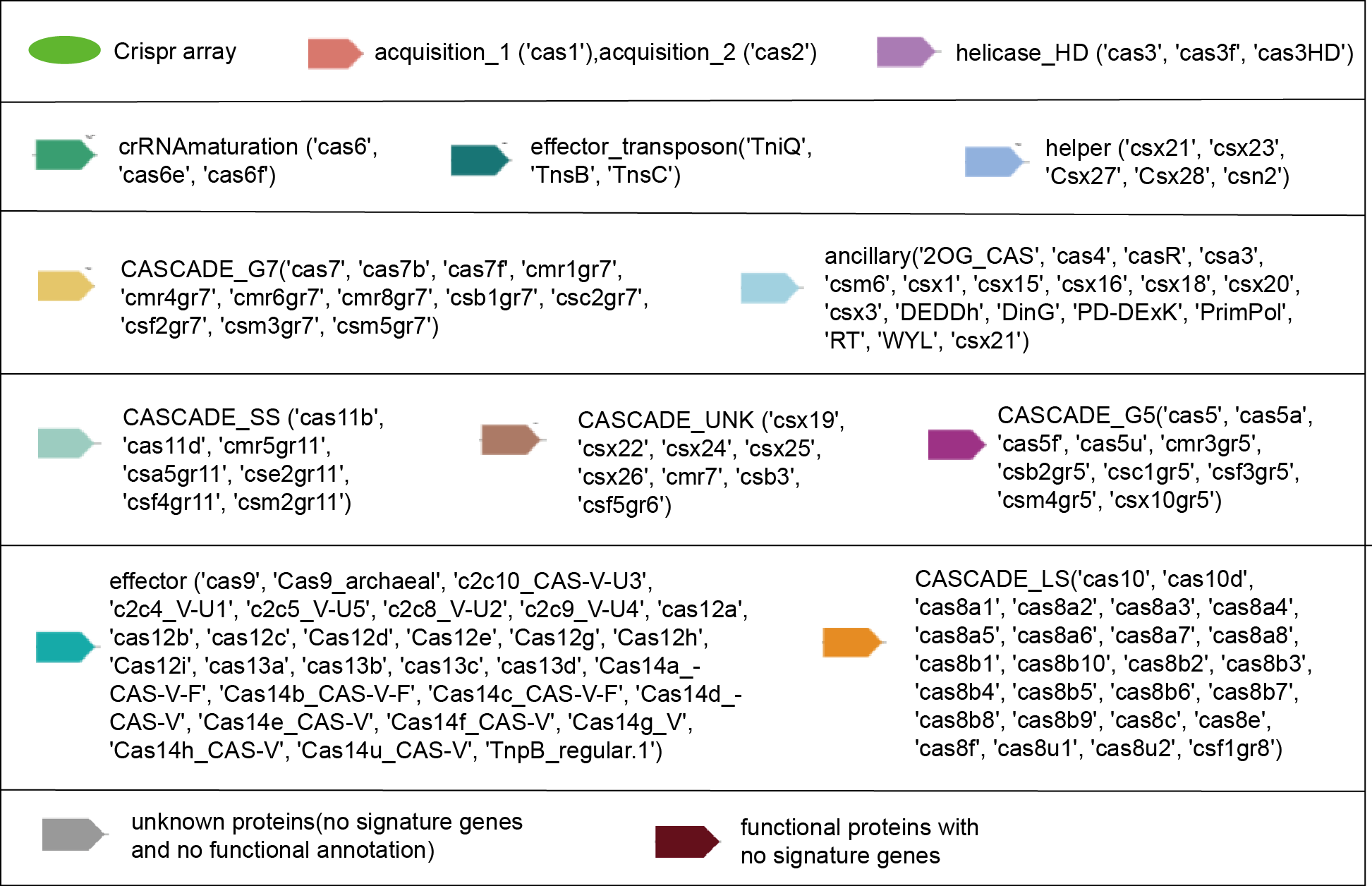| NZ_CP036553.1|WP_032531624.1|5130799_5132446_-|efflux-RND-transporter-periplasmic-adaptor-subunit |
gnl|CDD|379862 |
pfam16576, HlyD_D23, Barrel-sandwich domain of CusB or HlyD membrane-fusion. HlyD_D23 is the combined domains 2 and 3 of the membrane-fusion proteins CusB and HlyD, which forms a barrel-sandwich. CusB and HlyD proteins are membrane fusion proteins of the CusCFBA copper efflux system in E.coli and related bacteria. The whole molecule hinges between D2 and D3. Efflux systems of this resistance-nodulation-division group - RND - have been developed to excrete poisonous metal ions, and in E.coli the only one that deals with silver and copper is the CusA transporter. The transporter CusA works in conjunction with a periplasmic component that is a membrane fusion protein, eg CusB, and an outer-membrane channel component CusC in a CusABC complex driven by import of protons.
|
1.10127e-86 |
| NZ_CP036553.1|WP_032531630.1|5146479_5146851_-|DUF2809-domain-containing-protein |
gnl|CDD|378530 |
pfam10990, DUF2809, Protein of unknown function (DUF2809). Some members in this family of proteins are annotated as yjgA however currently no function for the protein is known.
|
3.36254e-24 |
| NZ_CP036553.1|WP_032531625.1|5132482_5133994_-|TolC-family-protein |
gnl|CDD|367035 |
pfam02321, OEP, Outer membrane efflux protein. The OEP family (Outer membrane efflux protein) form trimeric channels that allow export of a variety of substrates in Gram negative bacteria. Each member of this family is composed of two repeats. The trimeric channel is composed of a 12 stranded all beta sheet barrel that spans the outer membrane, and a long all helical barrel that spans the periplasm.
|
1.75155e-19 |
| NZ_CP036553.1|WP_032531621.1|5127421_5128297_+|hypothetical-protein |
gnl|CDD|372499 |
pfam13149, Mfa_like_1, Fimbrillin-like. A family of putative fimbrillin proteins found by clustering human gut metagenomic sequences. Analysis of structural comparisons shows this family to be part of the FimbA (CL0450) superfamily of adhesin components or fimbrillins.
|
2.17628e-13 |
| NZ_CP036553.1|WP_080546292.1|5138517_5139561_+|lytic-transglycosylase-domain-containing-protein |
gnl|CDD|381615 |
cd16894, MltD-like, Membrane-bound lytic murein transglycosylase D and similar proteins. Lytic transglycosylases (LT) catalyze the cleavage of the beta-1,4-glycosidic bond between N-acetylmuramic acid (MurNAc) and N-acetyl-D-glucosamine (GlcNAc). Membrane-bound lytic murein transglycosylase D protein (MltD) family members may have one or more small LysM domains, which may contribute to peptidoglycan binding. Unlike the similar "goose-type" lysozymes, LTs also make a new glycosidic bond with the C6 hydroxyl group of the same muramic acid residue. Proteins similar to this family include the soluble and insoluble membrane-bound LTs in bacteria, the LTs in bacteriophage lambda, as well as the eukaryotic "goose-type" lysozymes (goose egg-white lysozyme; GEWL).
|
4.34143e-62 |
| NZ_CP036553.1|WP_032531619.1|5125524_5126211_-|HAD-family-hydrolase |
gnl|CDD|319817 |
cd07515, HAD-like, uncharacterized family of the haloacid dehalogenase-like (HAD) hydrolase superfamily. The haloacid dehalogenase-like (HAD) hydrolases are a large superfamily of diverse enzymes that catalyze carbon or phosphoryl group transfer reactions on a range of substrates, using an active site aspartate in nucleophilic catalysis. Members include 2-L-haloalkanoic acid dehalogenase (C-Cl bond hydrolysis), azetidine hydrolase (C-N bond hydrolysis); phosphonoacetaldehyde hydrolase (C-P bond hydrolysis), phosphoserine phosphatase and phosphomannomutase (CO-P bond hydrolysis), P-type ATPases (PO-P bond hydrolysis) and many others. Members are found in all three kingdoms of life, and most genomes are predicted to contain multiple HAD-like proteins. Members possess a highly conserved alpha/beta core domain, and many also possess a small cap domain, the fold and function of which is variable. HAD hydrolases are sometimes referred to as belonging to the DDDD superfamily of phosphohydrolases.
|
1.66451e-48 |
| NZ_CP036553.1|WP_032531620.1|5126340_5127225_+|hypothetical-protein |
gnl|CDD|225509 |
COG2961, ComJ, Protein involved in catabolism of external DNA [General function prediction only].
|
0.000110992 |
| NZ_CP036553.1|WP_032531622.1|5128522_5129353_+|N-acetyl-gamma-glutamyl-phosphate-reductase |
gnl|CDD|372499 |
pfam13149, Mfa_like_1, Fimbrillin-like. A family of putative fimbrillin proteins found by clustering human gut metagenomic sequences. Analysis of structural comparisons shows this family to be part of the FimbA (CL0450) superfamily of adhesin components or fimbrillins.
|
1.56706e-24 |
| NZ_CP036553.1|WP_005780971.1|5125188_5125515_+|multidrug-efflux-SMR-transporter |
gnl|CDD|224987 |
COG2076, EmrE, Membrane transporters of cations and cationic drugs [Inorganic ion transport and metabolism].
|
4.55295e-23 |
| NZ_CP036553.1|WP_005808062.1|5124212_5124962_+|subclass-B1-metallo-beta-lactamase-CcrA |
gnl|CDD|293860 |
cd16302, CcrA-like_MBL-B1, Bacteroides fragilis CcrA and related metallo-beta-lactamases, subclass B1; MBL-fold metallo-hydrolase domain. MBLs (class B of the Ambler beta-lactamase classification) are a diverse group of metallo-enzymes that are capable of catalyzing the hydrolysis of a wide range of beta-lactam antibiotics. MBLs have been divided into three subclasses B1, B2 and B3, based on sequence/structural relationships and substrates, with the B1 and B2 MBLs being most closely related to each other. This subgroup of MBLs belongs to the B1 subclass. B1 enzymes are most active with two zinc ions bound in the active site, and have a broad-spectrum substrate profile.
|
3.66051e-125 |
| NZ_CP036553.1|WP_032531629.1|5140487_5146361_-|DUF3320-domain-containing-protein |
gnl|CDD|379066 |
pfam13195, DUF4011, Protein of unknown function (DUF4011). This family of proteins is found in archaea and bacteria. Many members are annotated as being putative DNA helicase-related proteins.
|
4.77717e-61 |
| NZ_CP036553.1|WP_032531628.1|5139598_5140498_+|ion-transporter |
gnl|CDD|366146 |
pfam00520, Ion_trans, Ion transport protein. This family contains sodium, potassium and calcium ion channels. This family is 6 transmembrane helices in which the last two helices flank a loop which determines ion selectivity. In some sub-families (e.g. Na channels) the domain is repeated four times, whereas in others (e.g. K channels) the protein forms as a tetramer in the membrane.
|
6.83568e-33 |
| NZ_CP036553.1|WP_005808058.1|5123428_5124061_+|CatB-related-O-acetyltransferase |
gnl|CDD|100040 |
cd03349, LbH_XAT, Xenobiotic acyltransferase (XAT): The XAT class of hexapeptide acyltransferases is composed of a large number of microbial enzymes that catalyze the CoA-dependent acetylation of a variety of hydroxyl-bearing acceptors such as chloramphenicol and streptogramin, among others. Members of this class of enzymes include Enterococcus faecium streptogramin A acetyltransferase and Pseudomonas aeruginosa chloramphenicol acetyltransferase. They contain repeated copies of a six-residue hexapeptide repeat sequence motif (X-[STAV]-X-[LIV]-[GAED]-X) and adopt a left-handed parallel beta helix (LbH) structure. The active enzyme is a trimer with CoA and substrate binding sites at the interface of two separate LbH subunits. XATs are implicated in inactivating xenobiotics leading to xenobiotic resistance in patients.
|
7.78297e-68 |
| NZ_CP036553.1|WP_032531618.1|5122985_5123432_+|GNAT-family-N-acetyltransferase |
gnl|CDD|379326 |
pfam13673, Acetyltransf_10, Acetyltransferase (GNAT) domain. This family contains proteins with N-acetyltransferase functions such as Elp3-related proteins.
|
8.17609e-39 |
| NZ_CP036553.1|WP_032539513.1|5134131_5137866_-|efflux-RND-transporter-permease-subunit |
gnl|CDD|226220 |
COG3696, COG3696, Putative silver efflux pump [Inorganic ion transport and metabolism].
|
3.32205e-159 |
